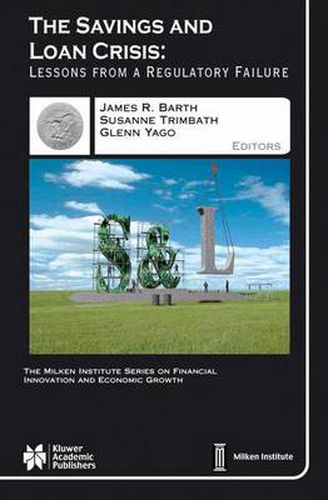Readings Newsletter
Become a Readings Member to make your shopping experience even easier.
Sign in or sign up for free!
You’re not far away from qualifying for FREE standard shipping within Australia
You’ve qualified for FREE standard shipping within Australia
The cart is loading…






This title is printed to order. This book may have been self-published. If so, we cannot guarantee the quality of the content. In the main most books will have gone through the editing process however some may not. We therefore suggest that you be aware of this before ordering this book. If in doubt check either the author or publisher’s details as we are unable to accept any returns unless they are faulty. Please contact us if you have any questions.
Our nation’s financial institutions operated profitably over the decades despite periods of severe turmoil. Between 1980 and early 1995, however, 1,273 savings and loan associations, 1,569 commercial and savings banks and 2,330 credit unions failed in the U.S. The cost of resolving this crisis in the banking sector exceeded USD 190 billion. The Savings And Loan Crisis: Lessons from a Regulatory Failure sets the record straight about what actually happened to our banking institutions in the 1980s. As is documented by the highly respected and diverse group of former regulators, scholars and practitioners contributing to this book, the collapse of this industry was caused by a confluence of adverse economic conditions and misguided regulatory decisions. Poorly designed deposit insurance, faulty supervision, and restrictions on investments prevented savings and loans from adapting to a changing financial marketplace. Unable to use financial innovations, savings and loans could not hedge interest rate and credit risks. These factors blocked portfolio diversification and lay at the root of the crisis. The savings and loan crisis was an accident, but it was an avoidable one. Most of the factors responsible for causing and exacerbating the industry’s problems were preventable, as is made clear in this volume. This book also provides an insider’s view of the transformation of the financial services industry in the United States since the 1980s: how the managers and owners make decisions about product offerings and investments; how the regulators monitor performance and enforce the rules; and how Congress and the Administration influence and are influenced by the financial services industry. Lastly, it focuses attention on the lessons that should have been learned from this difficult period in the history of U.S. banking, and that should help prevent future banking crises everywhere.
$9.00 standard shipping within Australia
FREE standard shipping within Australia for orders over $100.00
Express & International shipping calculated at checkout
This title is printed to order. This book may have been self-published. If so, we cannot guarantee the quality of the content. In the main most books will have gone through the editing process however some may not. We therefore suggest that you be aware of this before ordering this book. If in doubt check either the author or publisher’s details as we are unable to accept any returns unless they are faulty. Please contact us if you have any questions.
Our nation’s financial institutions operated profitably over the decades despite periods of severe turmoil. Between 1980 and early 1995, however, 1,273 savings and loan associations, 1,569 commercial and savings banks and 2,330 credit unions failed in the U.S. The cost of resolving this crisis in the banking sector exceeded USD 190 billion. The Savings And Loan Crisis: Lessons from a Regulatory Failure sets the record straight about what actually happened to our banking institutions in the 1980s. As is documented by the highly respected and diverse group of former regulators, scholars and practitioners contributing to this book, the collapse of this industry was caused by a confluence of adverse economic conditions and misguided regulatory decisions. Poorly designed deposit insurance, faulty supervision, and restrictions on investments prevented savings and loans from adapting to a changing financial marketplace. Unable to use financial innovations, savings and loans could not hedge interest rate and credit risks. These factors blocked portfolio diversification and lay at the root of the crisis. The savings and loan crisis was an accident, but it was an avoidable one. Most of the factors responsible for causing and exacerbating the industry’s problems were preventable, as is made clear in this volume. This book also provides an insider’s view of the transformation of the financial services industry in the United States since the 1980s: how the managers and owners make decisions about product offerings and investments; how the regulators monitor performance and enforce the rules; and how Congress and the Administration influence and are influenced by the financial services industry. Lastly, it focuses attention on the lessons that should have been learned from this difficult period in the history of U.S. banking, and that should help prevent future banking crises everywhere.